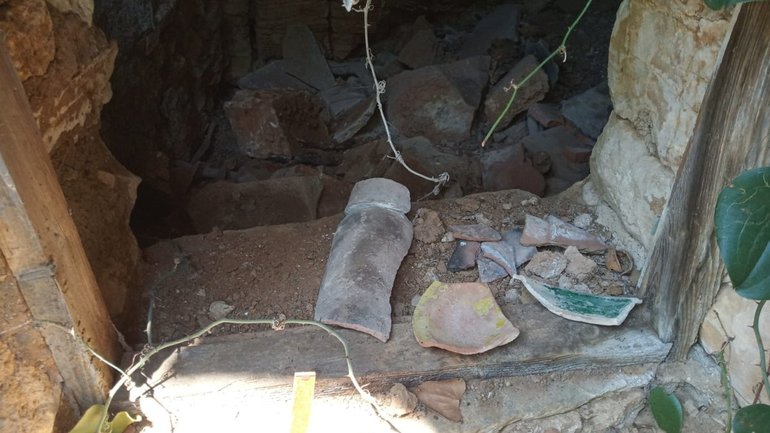Bulgarian speleologists found the cave of the Ukrainian ascetic Ivan Vyshensky on Mount Athos

Director of the International Institute of Athos heritage Serhiy Shumylo wrote on his Facebook page that the excavations were carried out by Bulgarian cavers, according to the Information and Educational Department of the UOC-MP.
“With the help of Bulgarian colleagues-cavers on Mount Athos, it was possible to find an unknown monastic cave near the ancient Zograf monastery, where, presumably, the last years of his life were spent in seclusion by an outstanding Ukrainian Saint, Athos elder and polemicist writer of the XVII century Ivan Vyshensky, who was originally from the village of Sudova Vysnia, in the Lviv region, " the researcher said.
He recalled that the name of this outstanding Ukrainian is well known from school lessons in Ukrainian literature, in Soviet times it was the only church author who miraculously remained in the school curriculum, despite the frenzied atheistic censorship and propaganda.
"However, few people knew that in fact, Ivan Vyshensky was not just a polemicist writer, but also an Athos schemer who lived on Mount Athos for more than 40 years. He spent the last years of his life in a cave gate in a cave near the Zografsky monastery, signing in his epistles as "Ioan Rusyn, a Zograf caveman," said Serhiy Shumylo. – Until recently, I thought that the cave in which elder Ivan Vyshensky labored was probably the one in which previously the elder St Kosma of Zograf (known as the "cave of St Kosma of Zograf") had labored. But so far, this assumption of mine has not been confirmed due to the fact that there are no traces of long-term human habitation in the cave. it is likely that Ivan Vyshensky could have been in this cave, but it is not proven that he spent the rest of his life there.
According to the director of the International Institute of Athos heritage, the newly discovered cave of Zograf is more suitable for the conditions of harsh reclusive and hermit life.
"It is located up from Zograf monastery, along the road (path) from Zograf to Kostamonit monastery, on a steep slope above the "Zograf River". To get down to the cave from the path, you need to tie ropes to trees and go down the slope to the cave... that is, the ascetic who entered the gate in this cave was really cut off from the world, and even food could only be obtained by ropes that should be lowered from the top to bottom to the cave... in the middle of the rock cave of natural origin was attached for life, had several small "rooms" covered with stones and clay and even partially plastered and whitewashed, there were also window openings, smoke from the fire was preserved... everything indicates that recluses lived and prayed in this cave for a long time. Bulgarian colleagues even found the remains of ceramics. Perhaps this is the cave of our holy fellow countryman St. Ivan Vishensky Svyatogorets...", - he wrote.
Serhiy Shumylo said that the inconvenience of access to the cave makes it difficult to explore it.
"But I hope that in the future we will be able to investigate it more thoroughly, including in order to find out whether the Ukrainian elder and polemicist writer Ivan Vyshensky really labored there. In any case, Ivan Vyshensky himself left irrefutable evidence that he spent the last years of his life in a cave Hermitage in the cave of Zograf monastery. Therefore, the cave he mentioned should definitely be next to Zografmonastery (although it is possible that in different periods he could live in seclusion in different caves of the Zograf monastery),” the report says.









